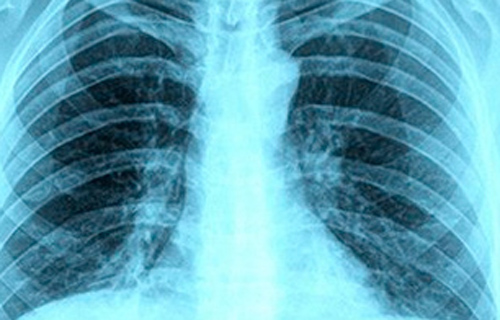Asbestosis: Symptoms, Diagnosis and Treatment

Asbestos is a mineral product which was widely used in the production of construction materials like cement or floor tiles.
Asbestosis is a chronic affection of the lungs which is caused by asbestos exposure, be it at home or at work. When exposed to asbestos, fibers can be inhaled, causing lung tissue scarring. People currently suffering from asbestosis got sick on the job or by renovating their homes by themselves, before the use of asbestos was regulated in 1970.
Symptoms of asbestos usually take 10 to 40 years to appear and can vary from mild to severe. The most common of them are:
- Dry cough
- Clubbing of fingertips and toes
- Shortness of breath
- Weight loss
- Chest pain
If you have been exposed to asbestos and you are experiencing any of these symptoms, especially shortness of breath, do not hesitate to share them with your doctor.
Causes of Asbestosis
Exposure to high levels of asbestos for a long time can affect the lungs because the airborne fibers cause problems in the oxygen-carbon dioxide exchange process. Asbestos fibers can irritate the tissue and cause the lungs to become stiff, making breathing even more difficult. In the end, the lung tissue becomes too stiff and the lungs can't expand and contract properly anymore.
Smoking does not cause asbestosis but it influences the retention of harmful fibers in the lungs and causes the disease to advance faster.
There are also some risk factors that people should be aware of. Working with asbestos-containing products and actions like installing or removing asbestos insulation or even mining put people at risk for asbestos exposure. However, materials that contain asbestos are safe if the fibers are contained because this way they cannot get into the air.
How Is Asbestosis Diagnosed?
As the symptoms of asbestosis are pretty similar to those of other respiratory affections, the disease can be very difficult to diagnose. A wide range of diagnostic tests might be necessary in order to correctly diagnose the illness.
Imaging Tests
The most common test that is made is a chest X-ray. On the image obtained, excessive whiteness in the lung tissue marks the presence of asbestosis. If the disease is advanced and both lungs are affected, they get a honeycomb appearance on the image.
Another imaging test used to diagnose asbestosis is CT (computerized tomography). This type of scans provide a more detailed image of the tissue and helps detect the affection in its early stages before it can be seen on a chest X-ray.
Pulmonary function tests are also used to determine the functionality of the lungs. These tests measure the airflow in and out of the lungs and also how much air the patients' lungs can hold. Some pulmonary function tests can even measure how much oxygen is transferred to the bloodstream.
Treatment of Asbestosis
There is actually no curing treatment for asbestosis as the effects of the fibers on the lungs cannot be reversed. Therefore, the treatment consists in relieving the symptoms and slowing the progression of the disease.
Routine follow-up care is mandatory, as well as regular chest X-rays and lung function tests, depending on the evolution of the disease.
Oxygen therapy can be used in order to ease breathing. This means that oxygen is delivered using a mask or a plastic tube with thin prongs that fit into the nostrils.
A lung transplant can also be an option if the symptoms are too severe and the disease is too advanced.
Self-management of Asbestos Exposure
First of all, stop smoking. This way the risk of developing lung cancer is reduced. Second of all, ask the doctor about vaccines that can lower the risk of lung infections.
Prevention is important, as well. Try to reduce the exposure to asbestos and strictly respect the safety measures when working with asbestos-containing products. Also, remember that most of the houses built prior to the 1970s contain asbestos in various forms. As long as they are still undisturbed, there is no reason to worry but make sure you do not damage these products because that is when they become dangerous. When they are damaged, there is a high probability for asbestos fibers to be released into the air.
